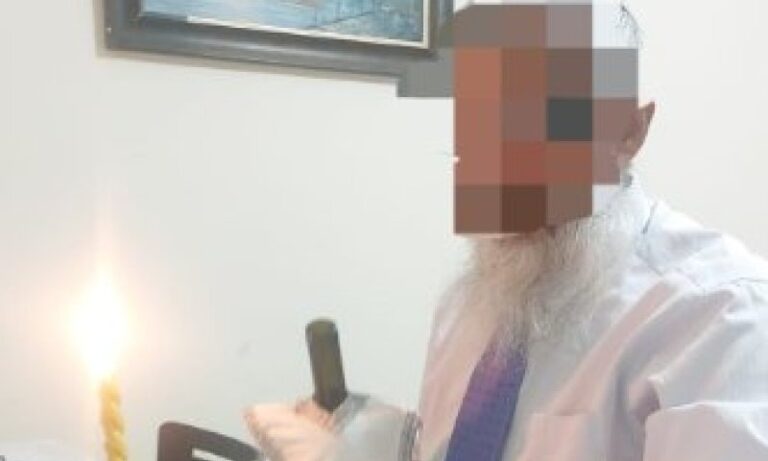 The following is meant as a convenient review of Halachos pertaining to Eiruv Tavshilin. The Piskei Din for the most part are based purely on the Sugyos, Shulchan Aruch and Ramah, and the Mishna Berura, unless stated otherwise. They are based on my understanding of the aforementioned texts through the teachings of my Rebeim. As individual circumstances are often important in determining the psak in specific cases, and as there may be different approaches to some of the issues, one should always check with one’s Rov first.
The following is meant as a convenient review of Halachos pertaining to Eiruv Tavshilin. The Piskei Din for the most part are based purely on the Sugyos, Shulchan Aruch and Ramah, and the Mishna Berura, unless stated otherwise. They are based on my understanding of the aforementioned texts through the teachings of my Rebeim. As individual circumstances are often important in determining the psak in specific cases, and as there may be different approaches to some of the issues, one should always check with one’s Rov first.
Rabbi Krakowski is the Rov Hamachshir for OU Kashrus in Eretz-Yisroel. He served as Rov of Kehilas Torah Vechssed. Rabbi Krakowski is a posek and Motz in Rechavia and Shaarei Chesed neighborhoods of Yerushalyim. Rabbi Krakowski learned in Beis Hamedrash and Mesivta of Baltimore, Shaar HaTorah Grodna in Queens, South Fallsburg, and Brisk.
Hilchos Eiruv Tavshilin:
On Yom Tov one is only permitted to cook for that day of Yom-Tov alone. When Yom-Tov is on Erev Shabbos this presents an issue as it becomes difficult to properly prepare for Shabbos. In order to allow us to prepare (cook, light fires etc.) for Shabbos Chazal created an “Eiruv”. This Eiruv is referred to as “Eiruv Tavshilin”. The following sheet will discuss the Halachos of who makes an Eiruv Tavshilin, how it’s made, when it’s made, and what to do if it isn’t made.
- An Eiruv Tavshilin must be made by every household in order to prepare for Shabbos when an Erev Shabbos is Yom-Tov.
- Even if one doesn’t intend to prepare food for Shabbos or even to light candles for Shabbos, an Eiruv Tavshilin should still be made.
- Someone who is a guest in someone else’s house for the entire Yom-Tov does not need to make his own Eiruv Tavshilin.
- Bachurim living in Diros in Israel, and likewise single girls living alone, are obligated to make an Eiruv Tavshilin.
- i. Basically anyone who is obligated to light their own Shabbos candles must make their own Eiruv Tavshilin (one can only light one candle if one didn’t make an Eiruv Tavshilin).
- i. It seems that the Poskim were in favor of people making such an Eiruv Tavshilin.
- ii. The Halachos of how to make such an Eiruv Tavshilin are similar to those of Eiruv Chatzairos and should only be done by someone who knows how to do so. If one feels he should be making such an Eiruv but is unfamiliar with the Halachos that person should consult a competent Halachic authority.
- iii. One shouldn’t Lechatchila rely on the “Gadol Hair’s” Eiruv; before relying on it one should consult the Gadol Hair.
- i. Bedi-eved any cooked food could be used even if it was already somewhat disregarded (i.e. left overs stuck to the sides of the pot…) as long as there is a Kezayis/Kebeitza.
- ii. There is a minhag and inyan to use these items for Shalosh Seudas.
- i. If one cooked item disappeared before Shabbos then one can only light one Shabbos candle, or alternatively share in someone else’s Shabbos candles.
- ii. If someone made an Eiruv Tavshilin and it inadvertently disappeared before Shabbos then even if that person ends up using the “Gadol Ha’ir’s” Eiruv Tavshilin, that person still can use his Eiruv Tavshilin another time bedi-eved.
- iii. Lechatchila one also cannot consume the baked item before Shabbos.
- i. If one, however, did make such an Eiruv and the Gadol Ha’ir let that person use his Eiruv, the next time that person again forgets to make an appropriate Eiruv he can still use the Gadol Ha’ir’s Eiruv Bedi-eved.
- i. In Israel one should not make an Eiruv Tavshilin more than twelve minutes after sunset without asking a Rov. In America one should not make an Eiruv Tavshilin more than 20 minutes after Shkia without asking a Rov first.
- i. If this is particularly difficult, bedi-eved the wife may do the cooking and light Shabbos candles. In such a case it may be wise to discuss with a Rov if the wife can or can’t prepare for Shabbos.
- i. If one can one should ask someone to make an Eiruv Tavshilin for him.
- In order to do so, the one making the Eiruv for another should do it with the intent that it be for the one(s) needing the food preparation. This can be accomplished by the person making the Eiruv giving the other person the food he is using for an Eiruv as a present.
- The Gadol Ha’ir (nowadays typically community Rabbonim) is Zoche for anyone who didn’t make their own Eiruv Tavshilin.
- An Eiruv Tavshilin is accomplished by taking 2 already prepared food items. One of these items should be a cooked food (traditionally boiled eggs, but it could be any other type of cooked food that would normally be consumed together with bread – fish meat beans etc.), and the other item should be a baked item (traditionally a roll or Matza, but it could consist of cake as well).
- There is a hidur to use complete items such as a whole Matza and a whole egg.
- Each item should be a Kebeitza (a halachic egg size measurement); bedi-eved if it is a Kezayis (halachic olive size measurement) it is still ok.
- If the cooked item of the Eiruv was consumed before one started to prepare foods for Shabbos, one cannot then even start to prepare these foods. If it disappeared after one started to prepare, then whatever one started to prepare is permissible but whatever one didn’t yet prepare one cannot prepare.
- If one only used a tavshil (cooked food), the Eiruv still works both for cooking and for baking.
- If one only used a baked item the Eiruv doesn’t work even for baking alone.
- The Eiruv Tavshilin should be made before candle lighting.
- Bedi-eved (and when there isn’t any other option) if it was not made one can still make it as long as it is before complete nightfall.
- If one didn’t light candles (as one can light candles on Yom-Tov anyway) and it is after Shkia, one can and should still bedi-eved make an Eiruv Tavshilin.
- If someone’s wife lit candles but the husband didn’t yet accept Yom-Tov, then he can still make an Eiruv Tavshilin. It is, however, better that his wife doesn’t do the preparations for Yom-Tov, but rather he or some other male members of the household should. This includes lighting Shabbos candles as well.
- If there isn’t any way for one to both daven Mincha and make an Eiruv Tavshilin, one should then rather daven Mincha and not make the Eiruv Tavshilin.
- One may not cook on the first day of Yom-Tov (on a 2 day Chutz-LaAretz Yom-Tov) for Shabbos which comes out on the day after the first day of Yom-Tov
- When there is a two day Yom-Tov followed by Shabbos the Eiruv Tavshilin should be made on before candle lighting of the first day.
- On all other Yomim Tovim other than Rosh Hashanah (i.e. all two day Chutz LaAretz Yomim-Tovim that are followed by Shabbos) Bedi-eved if one didn’t make an Eiruv Tavshilin before the first day, one can do so before the second day in the following conditional manner: “If today (the first day) was Yom Tov than I can cook tomorrow for Shabbos anyway, but if tomorrow is Yom-Tov then I am making now my Eiruv Tavshilin for Shabbos”.
If one did not make an Eiruv Tavshilin and didn’t have the Gadol Ha’ir’s Eiruv to use:
- Someone else (who did make an Eiruv) can still cook for him
- This indivicual who did not make an Eiruv cannot cook for anyone else for Shabbos even if the other person made an Eiruv.
- This individual can cook extra on Yom-Tov while he is cooking for Yom-Tov if it can theoretically be eaten on Yom-Tov.
One can only rely on the Gadol Ha’ir’s Eiruv one time. The Gadol Hair’s Eiruv cannot be relied upon regularly or even more than once unless otherwise stated or otherwise advised by a competent Halachic authority.
(YWN World Headquarters – NYC)










